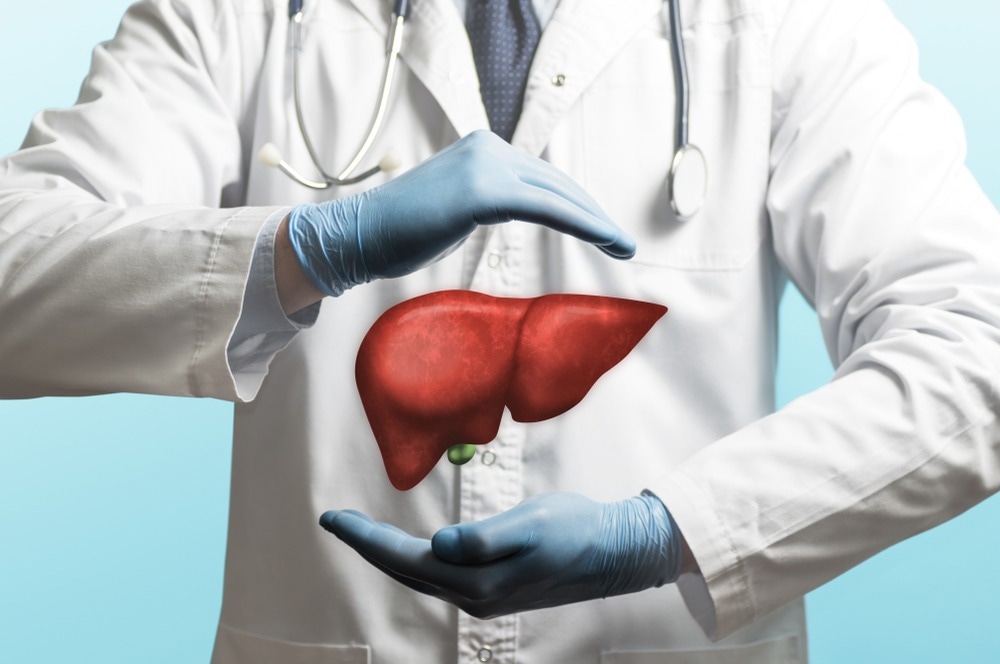In a recent study published in the Proceedings of the National Academy of Sciences (PNAS), researchers report that a gut microbial catabolite could reduce the cardiometabolic disease (CMD) burden in mice.

Study: A gut microbial metabolite of dietary polyphenols reverses obesity-driven hepatic steatosis. Image Credit: SvetaZi / Shutterstock.com
Background
Flavonoids exhibit anti-obesogenic, chemoprotective, and antioxidant properties. Dietary flavonoids are highly glycosylated, thus limiting their absorption in the small intestine and systemic distribution; however, flavonoids become catabolic substrates for gut microbes in the colon.
Several studies have reported the attenuation of diet-induced obesity by dietary flavonoids in a microbe-dependent manner.
Study findings
In the present study, the metabolic benefits of flavonoid consumption were found to be contingent on gut microbial metabolism. To come to this conclusion, the researchers initially tested the hypothesis that microbial catabolites of dietary flavonoids are responsible for anti-obesogenic properties.
To this end, a comparative metabolomics analysis of mice supplemented with Elderberry extract powder (flavonoid composite 1, [FC1]), Blackcurrant extract powder (FC2), or Aronia berry extract powder (FC3) on a high-fat diet (HFD) background was performed. Mice supplemented with FC1 were protected from HFD-induced obesity.
The 16S rRNA sequencing analysis revealed significantly more diverse microbial communities in the cecum of FC1 mice than in HFD control mice. In addition, liquid chromatography-mass spectrometry (LC-MS) analysis identified six microbial flavonoid catabolites in the portal plasma of mice.
Significant enrichment of only 4-hydroxy-3-methoxybenzoic acid and 4-hydroxyphenylacetic acid (4-HPAA) in the portal plasma of FC1 mice relative to HFD controls was identified. Moreover, 4-HPAA negatively correlated with plasma insulin levels and fat mass proportion.
Since 4-HPAA was previously reported to negatively correlate with obesity indices in non-diabetic obese humans, the researchers selected the catabolite for further investigations into whether it could abrogate HFD-induced metabolic disease.
To this end, HFD-fed mice were then implanted with subcutaneous slow-release pellets of 4-HPAA and compared to obese control mice implanted with a sham scaffold. Twenty-five days later, the researchers evaluated energy substrate utilization and global metabolism using indirect calorimetric data comparing the two groups of mice at the cold challenge (4 °C), room temperature (23 °C), and isothermal conditions (30 °C).
These experiments revealed that 4-HPAA-treated mice were more likely to use carbohydrates as their energy source in the cold. Furthermore, at the time of sacrifice, these mice also had elevated messenger ribonucleic acid (mRNA) levels of uncoupling protein 1 (Ucp1) in the brown adipose tissue, which mediates oxygen consumption in the cold, thus suggesting that 4-HPAA might modulate metabolic flexibility in cold conditions. Notably, 4-HPAA accumulated in the liver, which is consistent with earlier findings.
After six weeks of 4-HPAA exposure, hepatic steatosis was markedly reversed relative to controls. In addition, the authors identified 306 differentially expressed genes (DEGs) between 4-HPAA and control mice.
Ontology enrichment analysis elucidated the potential interactions of molecular pathways, including the positive regulation of fatty acid metabolic processes and the negative regulation of tumor necrosis factor (TNF) production.
Analysis of DEGs implicated in hepatic steatosis indicated that 4-HPAA treatment might be involved in steatosis improvement. Next, anesthetized mice were injected with 4-HPAA or saline control into their portal vein to harvest hepatic tissues after 10 minutes for further analysis. To this end, 4-HPAA reached 50 μM in peripheral plasma and 1.5 μmol/mg tissue in the liver at the endpoint with the 150 μg dose.
An unbiased proteomics approach identified several differentially abundant phosphopeptides in saline control and 4-HPAA-treated mice. Pathway analysis of downregulated phosphopeptides in 4-HPAA-treated mice implicated the adenosine monophosphate (AMP)-activated protein kinase (AMPK) pathway and AMPK-related metabolic effectors.
The researchers also assessed whether AMPK signaling was upregulated in mice implanted with subcutaneous 4-HPAA pellets. Immunoblotting of liver tissues from these mice showed elevated phosphorylation of AMPKα and acetyl coenzyme A carboxylase (ACC). The activation of AMPKα and ACC was also confirmed in liver tissues of mice directly injected with 4-HPAA in their portal vein.
AMPKα and ACC were phosphorylated in primary mouse hepatocytes treated with 4-HPAA in vitro in a dose-dependent manner. Clinical studies suggest flavonoid catabolism is less prominent among human gut microbiota with a significant inter-individual variation.
Numerous human gut commensals that can catabolize dietary flavonols have been identified. Four genes are required to degrade flavones/flavonols into monophenolic acids (e.g., 4-HPAA).
The researchers determined the co-occurrence of these four genes, otherwise known as the catabolic gene set, in metagenomic sequencing data to predict the catabolic capacity of human microbiomes. Flavonifractor plautii, the most studied gut commensal for flavonoid catabolism, was present in 28% of human microbiomes in the dataset; however, the co-occurrence of the four genes was extremely rare at about 1%.
Finally, after two weeks, the researchers colonized germ-free mice with F. plautii and administered kaempferol, a natural flavonol. Control mice were administered sterile saline.
Increased 4-HPAA levels were observed in the cecum and portal plasma of kaempferol-administered mice than in controls. This suggests that 4-HPAA synthesis could be modulated in vitro at single-microbe resolution.
Conclusions
The current study reports the functional importance of 4-HPAA, a flavonoid-derived microbial catabolite, in abrogating HFD-induced hepatic steatosis and its ability to activate AMPKα. Furthermore, the authors identified 28% of metagenomic assemblies containing any F. plautii strain; however, only 1% had the four catabolic genes capable of 4-HPAA synthesis.
Using in vitro, in silico, and in vivo approaches, the current study led to the identification of 4-HPAA that can abrogate obesity-driven hepatic steatosis.
Source:
- Osborn, L. J., Schultz, K., Massey, W., et al. (2022). A gut microbial metabolite of dietary polyphenols reverses obesity-driven hepatic steatosis. Proceedings of the National Academy of Sciences. doi:10.1073/pnas.2202934119